Parthenium hysterophorus steps up Ca-regulatory pathway in defence against highlight intensities
- PMID: 32488180
- PMCID: PMC7265497
- DOI: 10.1038/s41598-020-65721-7
Parthenium hysterophorus steps up Ca-regulatory pathway in defence against highlight intensities
Abstract
Parthenium hysterophorus exhibits tolerance to a great extent against abiotic stresses including high light intensities. In this study, P. hysterophorus was subjected to three different light intensities viz. control (CL, 250 µmol photons m-2 s-1), moderately high (ML, 500 µmol photons m-2 s-1) and high (HL, 1000 µmol photons m-2 s-1) for assessment of biochemical and physiological responses at 3 and 5 days after treatment (DAT). Proteomic responses were also observed at 5 DAT. Level of oxidative stress marker, abundance of H2O2 and O2- was highest in leaves exposed to HL followed by ML treatment. Biomass accumulation, photosynthetic parameters, chloroplast and mitochondrial integrity were also affected by both ML and HL treatments. Differential protein expression data showed modulation of thirty-eight proteins in ML and HL intensities. P. hysterophorus exhibited good ability to survive in ML then HL treatment as demonstrated by enhancement of the antioxidant system and photosynthesis. Furthermore, P. hysterophorus mobilized some key proteins related to calcium signaling, which in turn coordinate physiological homeostasis under stress. Proline and total soluble sugar content were high under stress; however, results of simulated experiment of our study indicate such accumulation of osmolytes may inhibit photon-availability to chloroplast. These results clarify our understanding of the mechanisms underlying the light stress tolerance of P. hysterophorus.
Conflict of interest statement
The authors declare no competing interests.
Figures

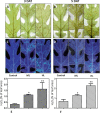
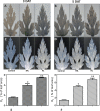





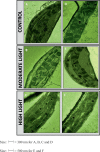
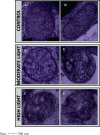

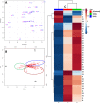



References
-
- Szymańska R, Ślesak I, Orzechowska A, Kruk J. Physiological and biochemical responses to high light and temperature stress in plants. Environ. Exp. Bot. 2017;139:165–177.
-
- Jokel M, Johnson X, Peltier G, Aro EM, Allahverdiyeva Y. Hunting the main player enabling Chlamydomonas reinhardtii growth under fluctuating light. Plant J. 2018;94(5):822–835. - PubMed
Publication types
MeSH terms
Substances
LinkOut - more resources
Full Text Sources

